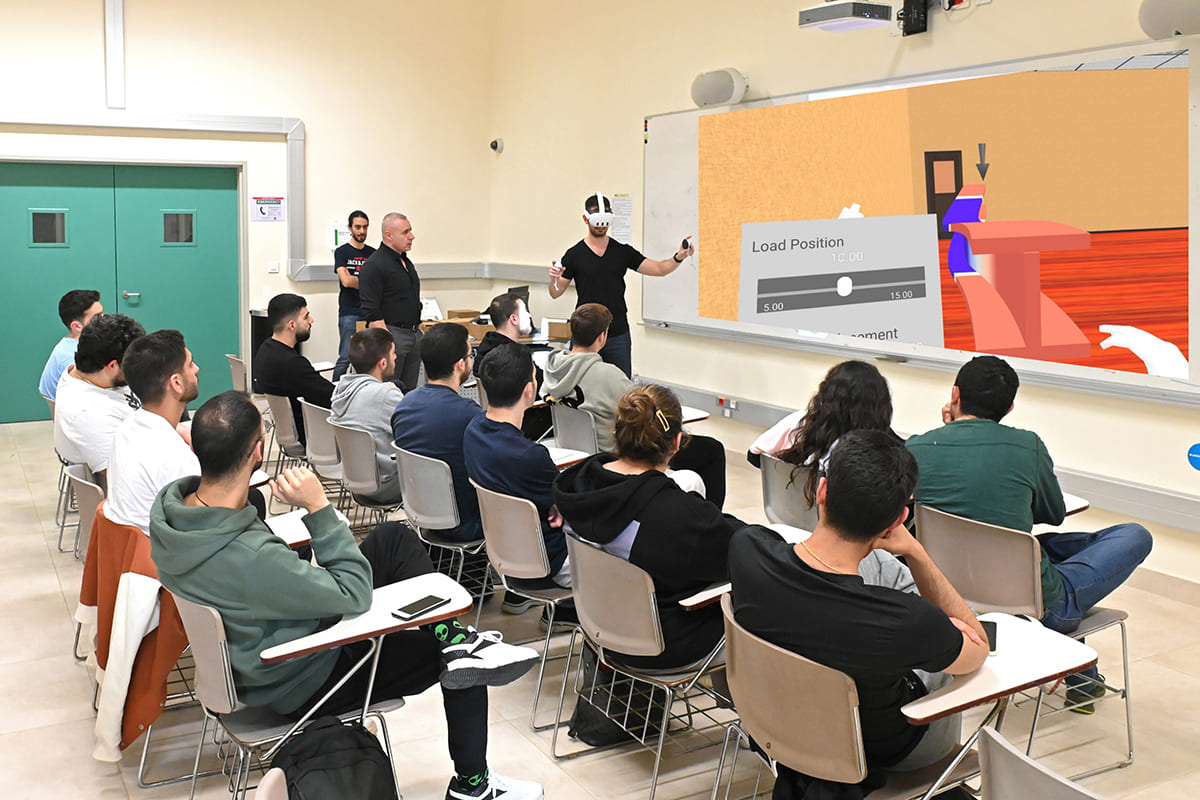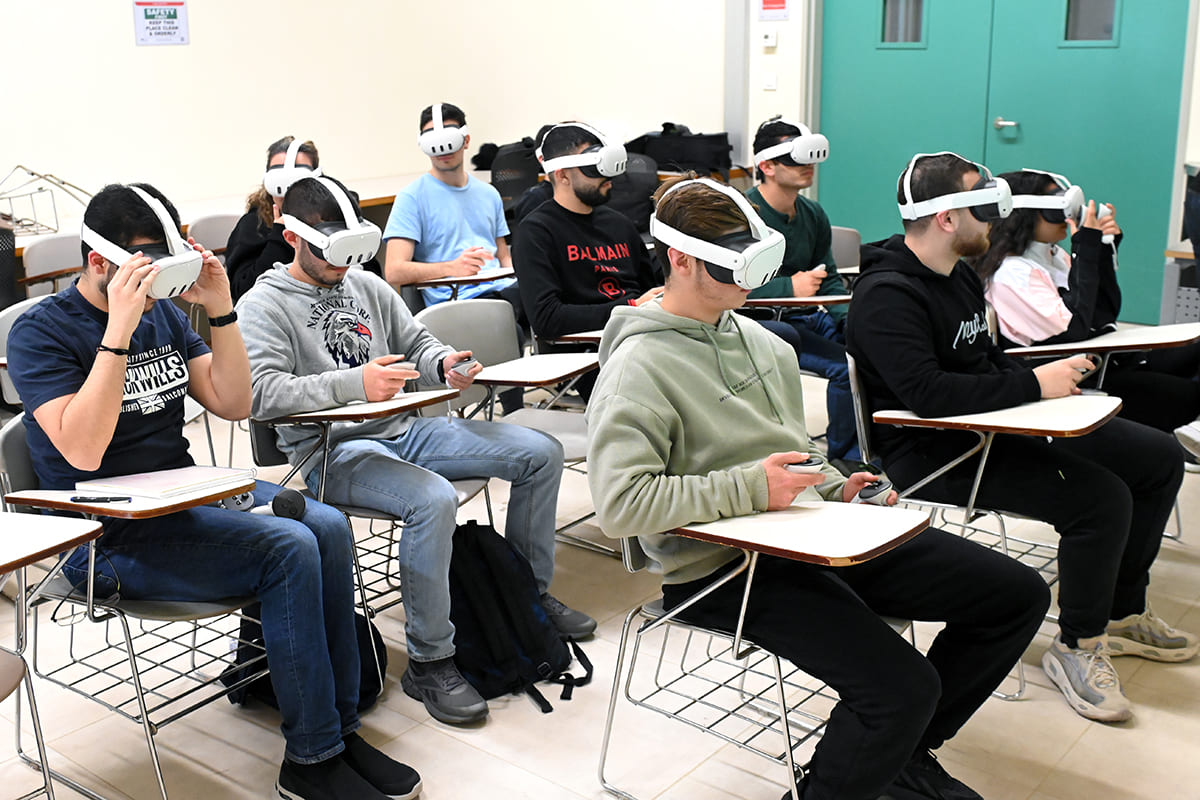The School of Engineering Delivers Immersive Learning Experiences
Engineering students visualize theoretical concepts through innovative technology, elevating their understanding and bolstering their professional prospects.
The use of cutting-edge technology is not new to LAU classrooms as Virtual Reality (VR) has made its debut at the School of Engineering (SOE) a couple of years ago. However, a new initiative aims to deliver yet more immersive learning experiences to the future engineers, in line with the university’s strategic pedagogical goals.
Based on the premise that every concept which requires a form of visualization can be better explained through VR, the school set out to understand and assess the different needs of engineering faculty members, and how this technology can bolster their course content. In the initial phase, four courses—in the engineering areas of structures, materials, and computer-aided design—have been identified and catered to, with many more courses to follow suit.
So far, Assistant Professor Evan Fakhoury has been spearheading the development of the VR apps with the help of two undergraduate students. In the future, the SOE will expand the effort and “put it in the hands of a rolling team of student engineers and developers who are capable of creating high-quality VR educational apps in short periods of time,” he explained.
Indeed, students articulated how the technology helped them grasp concepts very clearly, having tested it in the Steel Structures course, taught by Associate Professor and Associate Dean Caesar Abi Shdid. “VR really helped us fill the gaps in understanding how things work,” said third-year civil engineering student Johnny Khalifeh, who compared it to traditional videos and software that did not offer as much visual depth or scale.
For his colleague, Marilyne El Azzi, VR offered new perspectives to visualize concepts that they had only imagined before. Giving the example of lateral torsional buckling of steel girders—a civil engineering concept which illustrates the stresses and deformation of an unbraced beam due to applied loads that produce bending moments—the VR tool helped her go beyond the traditional sketches of axes to be able to virtually examine the beam from different perspectives.
Dr. Abi Shdid noted the immense benefits of visualizing the structures in such detail. “Having the chance to be one with the structure,” he affirmed, “will no doubt improve the students’ ability to build and design the structures when they go on to practice civil engineering after graduation.”
A soon-to-be-launched student access and success center at the school will exploit this developed VR library to help students immerse themselves in any engineering concept that they find difficult to understand. This center is a space where the students can study, review lessons together and help each other through one-on-one or group tutoring sessions.
“That LAU is investing in this technology,” said Dean Michel Khoury, “demonstrates our commitment to innovative pedagogy and our dedication to providing students the best tools to excel in their academic pursuits.”

